Best sewing machines for beginners: easy to use machines from Brother, Bernina, and John Lewis
This article contains affiliate links. We may earn a small commission on items purchased through this article, but that does not affect our editorial judgement.
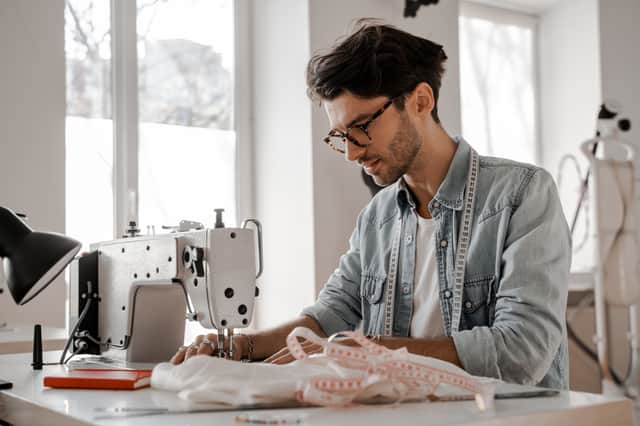

Whether it’s The Great British Sewing Bee, a friend’s enviable Instagram or pure boredom that’s inspired you to take up sewing, finding the right machine will make or break your newfound hobby.
There are numerous sewing machines targeted at beginners on the market, with Janome, Brother and Bernina among the leading brands. They tend to have a single motor and a foot pedal, which leaves your hands free to guide the fabric.
What should you look for?
Sarah Cordery, founder of fashion design agency Sarah Denise Studio, enjoys making burlesque costumes in her spare time. She recommends looking for a machine that offers straight stitch, zig zag stitch and an automatic buttonhole function, while steering clear of “anything too fancy” that might overwhelm you and put you off.
“Check that the machine you buy lets you adjust the stitch length and width,” she says. “A feature that alerts you when your bobbin is running out of thread is handy too.”
What will a beginner’s machine be able to do?
Entry level sewing machines should suffice for alterations, dressmaking and simple crafty projects, but you may want more stitch options for quilting and embroidery. Consider size and weight. Look for a lighter, more compact machine if you’ll need to move it about a lot, but go bigger and heavier if you can for better stability, clearer controls and a larger sewing area. Even the trustiest sewing machines can be temperamental and need servicing, so check that your chosen model comes with a decent warranty.
What should you pay?
In terms of what you should spend, there are plenty of affordable and reliable machines that will last you years with proper care. Beginners should expect to pay between £100 and £300 for a standard machine and between £300 and £400 for a computerised machine. We’ve included a couple of options for under £100, too, which can make good choices if you simply want to have a play or tackle odd jobs.
Ready, steady, sew!
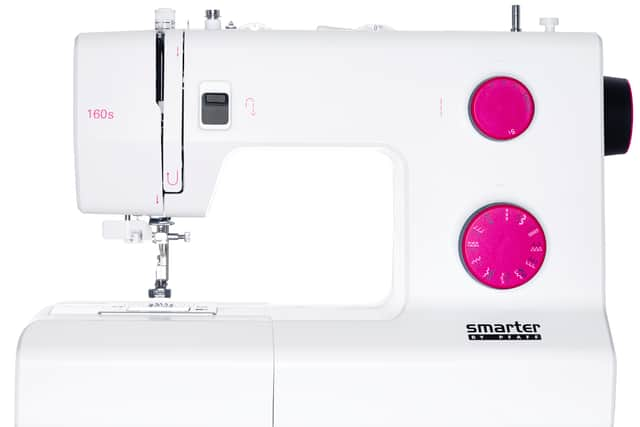

If you’ve never heard of Pfaff, rest assured that it’s a favourite brand of many professional sewers. The Smarter range is more accessible for beginners and those on a budget, with this versatile sewing machine offering fantastic value for money.
Though fairly basic, its range of features exceeded our expectations for the price, with helpful extras including a built-in needle threader and the ability to adjust the needle position for more precise topstitching.
There are 23 stitches available, including an automatic buttonhole function. The feet snap on quickly and the funky fuschia dials for selecting your stitch, width and length add a jolly touch to the simplistic white casing.
It doesn’t damage your fabric, it has a pleasingly soft whirr and the instructions are thoughtfully written with diagrams. In short: it’s a savvy first buy that’ll go the distance.
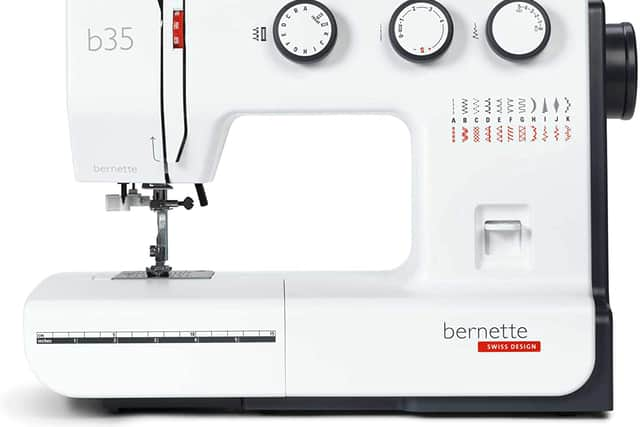

Bernina sewing machines are the creme de la creme, but they come at a high price. Bernette is part of the Bernina family, but it’s aimed at starter sewers who are wary of splashing too much cash on a fledgling hobby.
There are 23 stitches to try, including an automatic buttonhole function, and it’s a doddle to select the pattern, width and length by turning the three big dials.
Unlike many cheaper models, you can adjust the tension using a wheel, resulting in more stable stitching. You get a generous seven snap-on presser feet to help you with a variety of sewing tasks, including hemming and adding zips, while the hidden accessory box keeps all your bits and bobs to hand.
It can sew through multiple layers of fabric without making a din and there’s an integrated needle threader for convenience. It’s a quality buy that’ll offer you more freedom as your confidence grows.
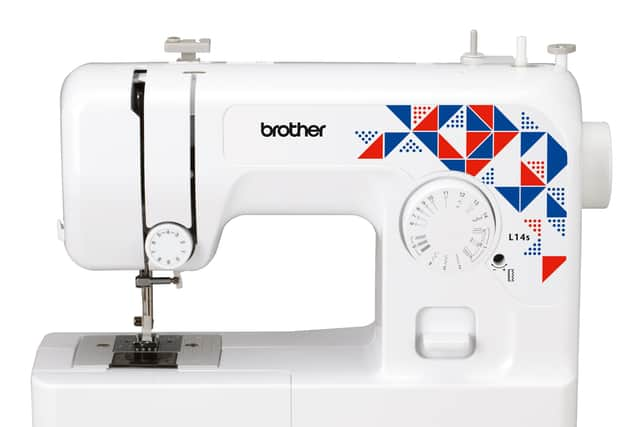

Brother sewing machines are renowned for providing superior mileage at a reasonable price. This mid-weight model is designed for basic dressmaking and alterations, with a choice of 14 stitches and an automatic buttonhole function.
Its bobbin loads from the top, making changing the bobbin easier, and there’s a reverse lever for securing the ends of seams.
It’s smooth and quiet in use, even when you’re sewing at full pelt, and the step-by-step instructions are beginner-friendly. It takes both denim and stretchy material in its stride, while a built-in needle threader and LED lighting make for a more enjoyable sewing session.
Our only niggle is that you can’t adjust the stitch length and width, but this might not bother total beginners.
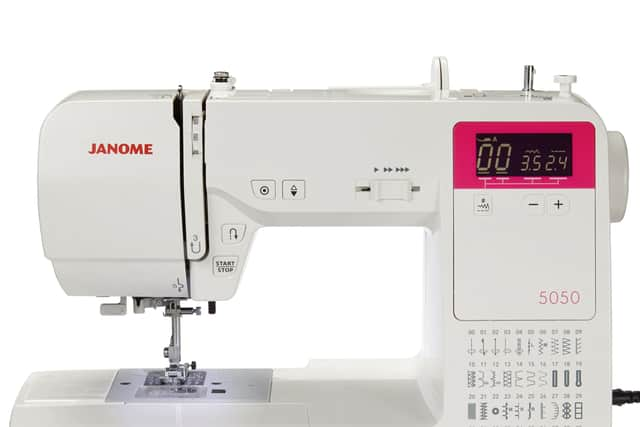

Exclusive to John Lewis & Partners, this use-friendly Janome offers 24 stitches, including all the basics you might need, an automatic buttonhole function and a fun range of jazzier options for when you fancy experimenting.
We like that the bobbin cover is see-through, helping you spot when the bobbin needs replacing. Its self thread feature is handy too, as is the reverse button for strengthening a stitch.
The feed teeth can drop down for free movement of the fabric when quilting or embroidering and it’s easy to adjust the width and length of your chosen stitch.
It’s relatively quiet, the instructions are clear and straight-forward, and it can handle thicker fabrics like denim without throwing a strop. It’s not cheap at nearly £300, but it’d make a solid investment for an enthusiastic beginner.
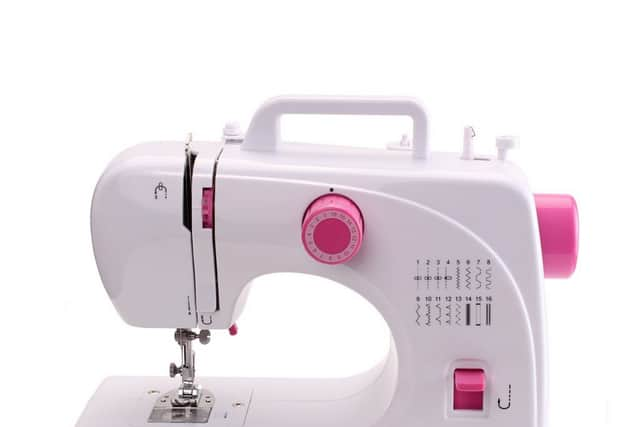

Hobbycraft is a mecca for crafty types, so it’s little wonder that its own-brand sewing machines are bestsellers.
Compact and colourful, this ‘midi’ model is lightweight enough to carry around and small enough to store in cramped spaces. Its bright pink dial lets you choose from 12 stitches, including one and four-step buttonholes, but you can’t tweak their width and length.
It offers reverse sewing and automatic thread rewind, and there’s a useful integrated thread cutter. It’s easy to adjust the speed, with a low setting that won’t intimidate younger beginners (or their parents!).
Set up is speedy thanks to easy to follow instructions, but the foot pedal’s a little flimsy and the needle can be a tad tricky to thread.
Overall, it’s fun to use and very affordable, but it may frustrate anyone who isn’t a total novice.
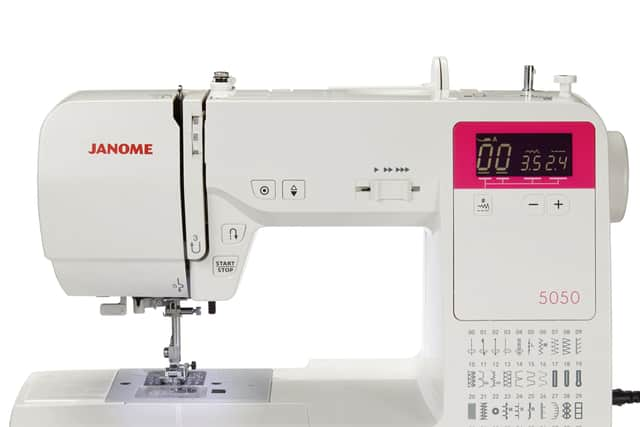

Tempted by the modern computerised sewing machines on the market but struggling to justify their higher cost as a beginner?
Look to this introductory Janome, which though pricier than the manuals on our list, does it all for under £350. Its simplicity of use belies its versatility, with 50 stitches, extra needle penetration power and a high maximum stitch width of 7mm.
The digital display reminds you which stitch you’ve chosen and the needle up/down button can program the needle to finish in the fabric for faff-free pivoting on corners.
It can handle all fabrics, including stretchy jersey, and its array of useful accessories include a zipper foot and a seam ripper.
Being able to drop the feed for free embroidery is a bonus, too. It’s robust and reliable, so go ahead and treat yourself.


This mini, featherlight sewing machine is designed for complete beginners, but it’s also a great no-nonsense model for everyday repairs.
There are only 12 stitch options, but embroidery is one of them, so you shouldn’t be too limited creatively. There’s an automatic buttonhole function, a reverse button for securing stitches and two set speeds if your foot pedal control needs some practice.
With a weight of just 2kg, it doesn’t feel sturdy, but its neat size makes it ideal for travel.
It’s a shame that there’s no drop feed for freer movement when you want it, nor a built-in needle threader, but if you’re merely wanting to get crafty with thin fabrics without breaking the bank, then it will probably suffice.
It’s fairly intuitive to use, but the instructions could be more detailed, so turn to the many how-to videos on YouTube if in doubt.
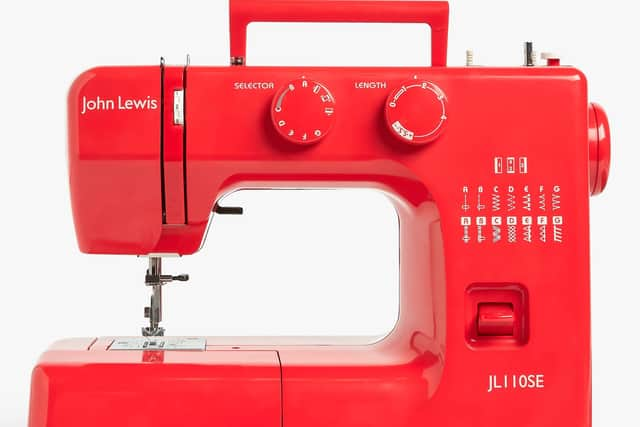

John Lewis & Partners’ own-brand sewing machine is so popular that it’s currently out of stock in all seven colours. But fear not, we have it on good authority that it’ll be back by the end of January.
With 14 stitch options and an automatic buttonhole function, it covers all the key bases, while leaving you with enough scope to try an intermediate project or two. Its free arm is useful when altering trousers or adjusting cuffs, and there’s a built-in LED light to help you see your work clearly.
You won’t have any problems using light to medium-weight fabrics, but you’ll need a heavier-duty model for anything thicker.
You can change the length but not the width of your stitches, and the front-loading bobbin can be fiddly to change. There aren’t any embroidery options, either, making it best suited for straightforward repairs and embellishment-free dressmaking.